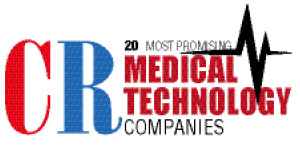 The clinical, regulatory and business landscape of the healthcare sector is seeing a great transformation. This is driven as much by the rising demand of patient-customers for greater accessibility and better care delivery as it is by the efforts of governments and the healthcare industry to give them just that. The industry is now moving aggressively on two key fronts. One: increasingly taking healthcare to patients wherever they are–for example through telemedicine–rather than requiring them to go to hospitals or visit their doctors. Two: transitioning to a value-centric operational model while continuing to deliver in the current fee-for-service model. Both fronts require a significant rework of the infrastructure and governance of healthcare providers—that is where the challenges lie.
The clinical, regulatory and business landscape of the healthcare sector is seeing a great transformation. This is driven as much by the rising demand of patient-customers for greater accessibility and better care delivery as it is by the efforts of governments and the healthcare industry to give them just that. The industry is now moving aggressively on two key fronts. One: increasingly taking healthcare to patients wherever they are–for example through telemedicine–rather than requiring them to go to hospitals or visit their doctors. Two: transitioning to a value-centric operational model while continuing to deliver in the current fee-for-service model. Both fronts require a significant rework of the infrastructure and governance of healthcare providers—that is where the challenges lie.Awesome they may be, however, Napier Healthcare CEO Tirupathi Karthik believes they are not insurmountable, especially for his company and customers. “Our platform of the future caters as much to inside-the-hospital problems as it does outside,” he says.“With Cloud architecture and HTML5, we deliver native mobility in our portfolio, which helps anytime-anywhere delivery of healthcare services. In short, Napier democratizes healthcare delivery models, making it affordable and putting it within everyone’s reach—pretty much on demand! With such an approach, health systems and IDNs (Integrated Delivery Networks) can increase revenue while reducing costs at the same time and yet improve patient satisfaction. This is a perfect recipe for success.”
Of course, Tirupathi speaks confidently from a position of strength, held up by a long list of happy client organisations across the globe. Napier–the healthcare IT solutions company headquartered in Singapore and established in 1996–today has more than 70 healthcare provider installs across the world, handles more than 26,000 beds and 4 million laboratory tests currently, and, sees to the processing of 30,000 telemedicine referrals and 2.2 million outpatients annually.
Ensuring ROI
Much of Napier’s business success is attributable not just to the innovative technologies it has rolled out through the years, but also to how it ensures its clients gain the highest achievable returns on their IT investments. This is particularly crucial and increasingly harder to effect every day, but Tirupathi has no doubt about Napier’s ability to deliver on that front.
Citing one of his company’s key products for the global market, Napier HIS, a healthcare IT portfolio that provides for all the information, communication and transactional needs of hospitals, Tirupathi says: “What differentiates Napier’s HIS is the implementation of a futuristic looking tech stack built for native mobility, which is Cloud-based, componentized, database-agnostic and built on an Open source platform, thereby providing the lowest cost of ownership in the industry. In addition, its rich functional feature set and HL7 based connectivity enables easy implementation by a hospital of 25 beds and 1,500 beds alike. Most hospitals or labs are organized as IDNs or clusters of facilities and need differently abled platforms for different sites. Napier’s HIS scales very nicely to accommodate both ends of such hospital chains. With native mobility, the HIS application is accessible on demand, without a need for additional investments.”
This need to deliver top dollar ROI extends further to how Napier takes charge of deployment initiatives for its customers. “Many of our projects have a business justification that we help create using our consultative ‘value gates’ methodology,” says Tirupathi.“This also helps our customer benchmark the success of the project at the end of the implementation cycle.
Besides project cost justification, this approach allows both us and the customer to understand the value and the additional revenue that we generate using our solutions. Hospitals typically buy our solutions to increase revenue or reduce cost, and it is beneficial to help quantify that in any relationship so that right expectations are set and delivered!”
Xtend-ing to the future
The need to constantly serve the needs of healthcare providers and their patients is hardcoded within the company’s corporate DNA, and ensures that Napier’s solutions deliver functions that are meaningful, deliver value from day one of implementation, and are easy to use. Right now, the company sees and has already begun implementing integrated solutions to meet the great demand for much-vaunted telemedicine/tele-health systems across the world.
“We see an increasing need for healthcare delivery beyond the confines of hospitals, clinics and other medical facilities,” says Tirupathi. “Acute care facilities owe it to their communities to step beyond the physicality of their facilities. Due to increasing longevity, health systems need to cater to the demands that require the point-of-care to be closer to the patient. This is a need that developing countries and developed countries have in common. Much of it is prompted by the extensive reach and cost efficiencies of having solutions such as those for mobile and home care. For example, maternal and neo natal outcomes can be significantly enhanced with simple mobile technology using basic phones in third world countries.”
“In response to these trends, we have put our Xtend solutions portfolio very prominently on our road map. As its name suggests, these solutions extend the reach and delivery of healthcare into the community. These include Napier Loop–the patient referral management system that increases referral velocity and patient satisfaction scores–and a solution that uses a combination of telemedicine and wearable tech to manage chronic illnesses by facilitating tele-consultation, tele-rehab and also emergency services.”
Putting out solutions that enable healthcare to breach the natural limitations set by physical location and geography, save lives and lower their costs of operation—all that may sound too good to be true. But that’s exactly what Napier is doing and will in all likelihood continue to do for a long time to come.

Napier democratizes healthcare delivery models, making it affordable and putting it within everyone’s reach—pretty much on demand!
Besides project cost justification, this approach allows both us and the customer to understand the value and the additional revenue that we generate using our solutions. Hospitals typically buy our solutions to increase revenue or reduce cost, and it is beneficial to help quantify that in any relationship so that right expectations are set and delivered!”
Xtend-ing to the future
The need to constantly serve the needs of healthcare providers and their patients is hardcoded within the company’s corporate DNA, and ensures that Napier’s solutions deliver functions that are meaningful, deliver value from day one of implementation, and are easy to use. Right now, the company sees and has already begun implementing integrated solutions to meet the great demand for much-vaunted telemedicine/tele-health systems across the world.
“We see an increasing need for healthcare delivery beyond the confines of hospitals, clinics and other medical facilities,” says Tirupathi. “Acute care facilities owe it to their communities to step beyond the physicality of their facilities. Due to increasing longevity, health systems need to cater to the demands that require the point-of-care to be closer to the patient. This is a need that developing countries and developed countries have in common. Much of it is prompted by the extensive reach and cost efficiencies of having solutions such as those for mobile and home care. For example, maternal and neo natal outcomes can be significantly enhanced with simple mobile technology using basic phones in third world countries.”
“In response to these trends, we have put our Xtend solutions portfolio very prominently on our road map. As its name suggests, these solutions extend the reach and delivery of healthcare into the community. These include Napier Loop–the patient referral management system that increases referral velocity and patient satisfaction scores–and a solution that uses a combination of telemedicine and wearable tech to manage chronic illnesses by facilitating tele-consultation, tele-rehab and also emergency services.”
Putting out solutions that enable healthcare to breach the natural limitations set by physical location and geography, save lives and lower their costs of operation—all that may sound too good to be true. But that’s exactly what Napier is doing and will in all likelihood continue to do for a long time to come.






